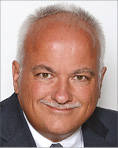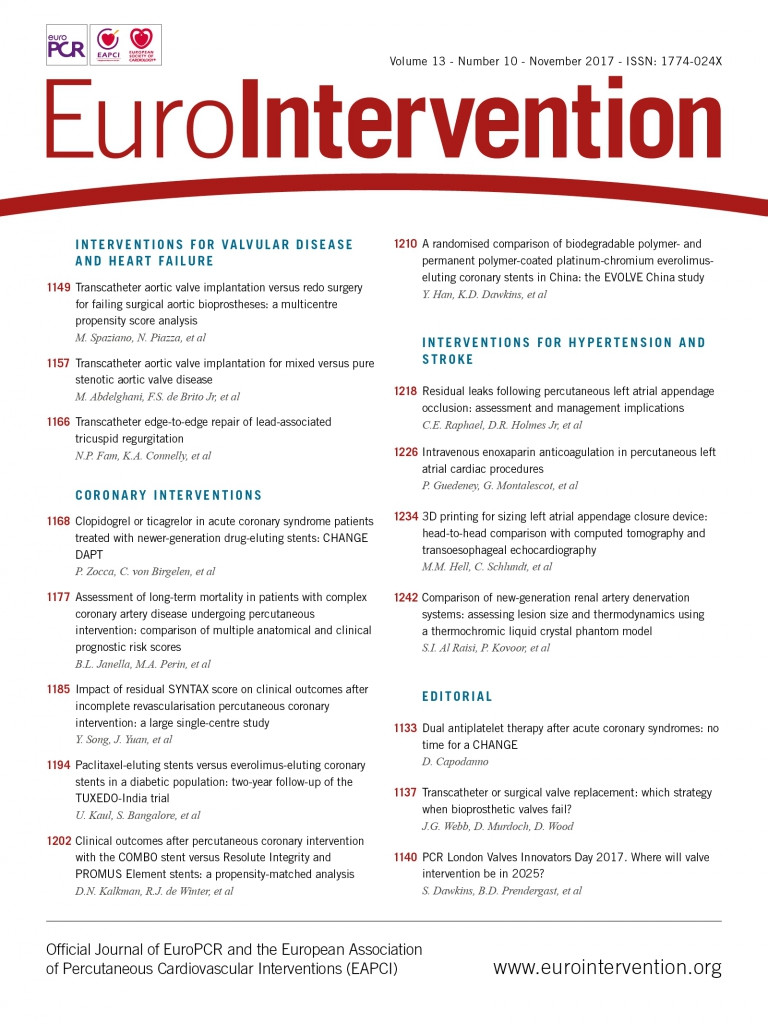
One of the main roles of our association is to be involved in teaching endeavours that best further practice, allow for a better understanding of current treatment strategies and provide our members with up-to-date access to the highest level of clinical information concerning our speciality. PCR London Valves, dedicated to covering the state of the art in transcatheter therapies for valvular heart disease, is clearly one of those educational meetings that we are proud to be part of.
As has been oftentimes noted, this year marks not only the 40th anniversary of PCI, but the 15th anniversary of TAVI. The roots of the PCR London Valves meeting, which took place at the end of September, stretch back for more than half of this history of TAVI, and this three-day meeting is in itself emblematic of the ongoing changes and spirit that characterises the field. London Valves 2017 attracted a record number of over 2,700 participants and the EAPCI is proud to be officially involved in a scientific gathering which indeed fulfils the needs of our members and the community at large by providing a unique international forum where leading experts can come together and share their experience and knowledge.
Today, with the continued evolution in knowledge and practice, along with the gradual broadening of the patient population that can be treated percutaneously, it is critical that PCR London Valves does not limit itself to approaching treatment for a specific valve alone. Instead, it touches on different aspects of valvular therapies as a whole, incorporating discussions on the cross-speciality work of the Heart Team, the development of new techniques and devices with a special dedicated sessions on imaging and, this year, offering the opportunity to present and discuss the recently published European Society of Cardiology/EACTS joint guidelines for the management of valvular heart disease (VHD).
Along with the more general themes, there were focused presentations, with well-received and highly informative live case presentations on mitral valve interventions. For many, treatment of the mitral valve has reached a certain plateau, with the need to address different approaches, devices and techniques, bringing them together within the work of the Heart Team in order to ensure that we develop coherent, responsive and evolving strategies. Similarly, far from being the forgotten valve that it was just a year or two ago, the tricuspid is now receiving considerable attention, in part due to the large patient population that remains untreated or undiagnosed until later stages of the disease. With a growing array of new devices enhancing interventions, the future for tricuspid treatments seems increasingly positive.
I would also like to highlight the very popular and well-received learning centres with their practical “hands-on demos” that were organised by our industry partners. Besides their value in training, the learning centres provide an essential link between the practitioner and the device manufacturers themselves, something which is far from being a one-way street, but allows for an open and constructive exchange between the two sides, further permitting the intelligent evolution of the devices we need.
All in all, with its ability to transcend individual protocols and treatments to touch on the global needs involved in transcatheter therapies for valvular heart disease as a whole, while never forgetting the individual techniques involved in aortic, mitral and tricuspid therapies, PCR London Valves has successfully positioned itself as the measure by which we can follow the developments in this rapidly evolving field.

